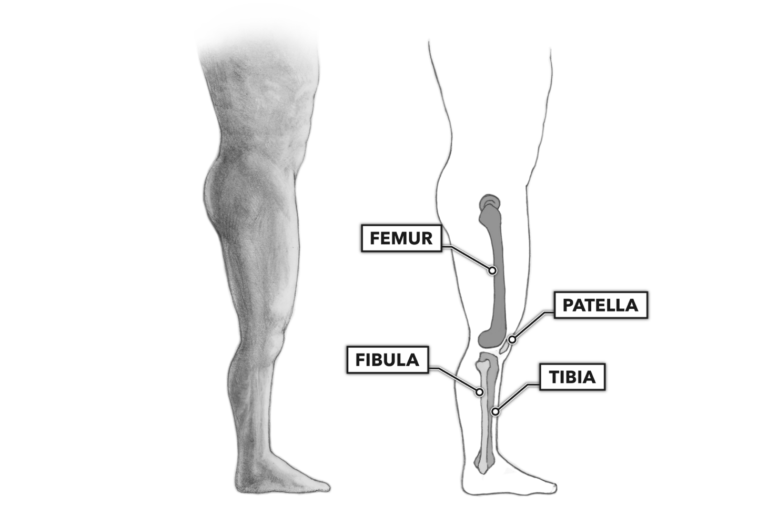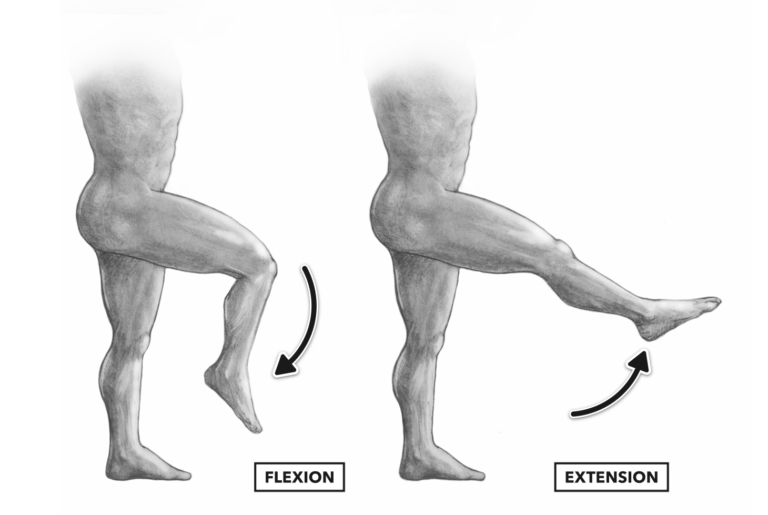The knee joint is comprised of four bones: the femur, patella, tibia, and fibula (Figure 1). They combine to create one of the least structurally stable joints in the body. Accordingly, the knee can only move safely in a limited range and pattern of motion, unlike the shoulder or the hip.
While the musculature and connective tissues that keep the knee stable are complex, the movements that the knee produces are quite simple: flexion and extension (Figure 2).
In life beyond the superficial movements associated with some gym equipment, such as a leg extension machine, knee flexion and extension rarely occur in isolation. It is more common to see these movements coordinated with other movements of the lower limbs, such as in the squat, where the knees flex and extend along with the hips and ankles.
Additional Reading
- Movement About Joints, Part 1: The Shoulder
- Movement About Joints, Part 2: The Elbow
- Movement About Joints, Part 3: The Wrist
- Movement About Joints, Part 4: The Hand and Fingers
- Movement About Joints, Part 5: The Hip
- Movement About Joints, Part 7: The Ankle
- Movement About Joints, Part 8: The Vertebral Column
Comments on Movement About Joints, Part 6: The Knee
Seeing that the knee rarely moves in a isolation way makes it obvious that it should be trained using functional movements that reproduce the functions the knee will have in life and sports.


Movement About Joints, Part 6: The Knee
1